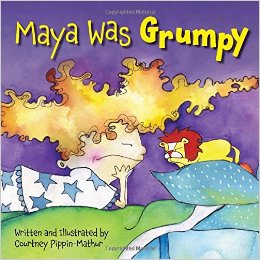Let’s Talk About Saying No
 Let’s Talk About Saying No is a book written by Joy Berry about when to say no, and when not to. The book is accompanied by bright illustrations, and the topic is presented by a cat named Casper, which makes the topic lighter and fun to look at. Casper the cat talks about a bunch of situations where Tonya, the girl in the story, should say no, and other times when she shouldn’t. For example, Tonya learns that she should say no when someone asks her to do something she knows she shouldn’t, like taking cookies from the cookie jar when she is not allowed. She also learns that she shouldn’t say no when someone asks her to do something she should, such as when her mother asks her to go to bed because it’s late and she has school the next day. There are many other examples in the book that get this basic idea across.
Let’s Talk About Saying No is a book written by Joy Berry about when to say no, and when not to. The book is accompanied by bright illustrations, and the topic is presented by a cat named Casper, which makes the topic lighter and fun to look at. Casper the cat talks about a bunch of situations where Tonya, the girl in the story, should say no, and other times when she shouldn’t. For example, Tonya learns that she should say no when someone asks her to do something she knows she shouldn’t, like taking cookies from the cookie jar when she is not allowed. She also learns that she shouldn’t say no when someone asks her to do something she should, such as when her mother asks her to go to bed because it’s late and she has school the next day. There are many other examples in the book that get this basic idea across.
This book is great because it talks about an important concept that children learn as they grow up, but presents it in simple writing that isn’t preachy. Joy Berry has written other stories in the Let’s Talk About series, such as Let’s Talk About Feeling Angry, Let’s Talk About Being Helpful, and others.
How can parents use this book?
Continue reading
 A Perfectly Messed-Up Story is a children’s book written by Patrick McDonnell. This book tracks the story of Louie, a young boy in pajamas. Except that his story is interrupted when splotches of jam, peanut butter, crayon marks, and more clutter the pages and ruin his storytelling. Louie becomes upset and decides he’s not going to tell his story anymore: “Who would eat a jelly sandwich while reading MY book?”Continue reading
A Perfectly Messed-Up Story is a children’s book written by Patrick McDonnell. This book tracks the story of Louie, a young boy in pajamas. Except that his story is interrupted when splotches of jam, peanut butter, crayon marks, and more clutter the pages and ruin his storytelling. Louie becomes upset and decides he’s not going to tell his story anymore: “Who would eat a jelly sandwich while reading MY book?”Continue reading



